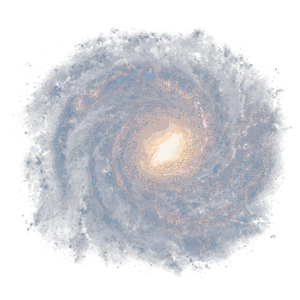The Downlink • Jan 01, 2021
Seeing, feeling, and imagining the cosmos
Space Snapshot

Normally the Space Snapshot is a beautiful image from space; this week, we’d like to share a beautiful gesture. Planetary Society member James Edgar carved this image of the Whirlpool Galaxy into oak for visually impaired friends to help them experience the beauty of the cosmos by touch. He has done the same with other space images, using a digital carving machine.
You love space, now take action
This weekly newsletter is your toolkit to learn more about space, share information with your friends and family, and take direct action to support exploration. Anyone can subscribe at planetary.org/connect to receive it as a weekly email.
Mission Briefings


Scientists studying 2019 radio data say they have found a signal that came from the direction of Proxima Centauri, the closest star to Earth. Proxima Centauri has at least one planet that may be habitable to life as we know it. There is a slim chance that the signal came from extraterrestrial beings, though other explanations are far more likely. Read our guide to the news here. Pictured: An artist’s impression of the surface of the planet Proxima b, which orbits Proxima Centauri. Image credit: ESO/M. Kornmesser.

Japan’s Hayabusa2 spacecraft collected a total of 5.4 grams (0.2 ounces) of material from asteroid Ryugu. This greatly exceeds the mission’s goal of 0.1 grams. New close-up images of the material recently returned to Earth show size differences in the rocks collected from the two sample sites. Learn more about the mission.

A new simulation shows just how precarious the balance is that allowed humans to evolve on Earth. Life has existed here for at least 3.5 billion years—a majority of our planet’s 4.5 billion-year history. Any number of random events could have stopped life in its tracks, including larger asteroid impacts, solar flares, and volcanic eruptions. A new simulation of thousands of Earth-like planets shows that’s actually the likelier outcome, and that multiple simulations of the same planet don’t produce the same results.
From The Planetary Society


Explore the imaginations of our members in a new space art gallery. Throughout 2020 many of you sent us your space-inspired artwork. You can now explore an online collection of works of art shared by members and supporters. If you have space artwork to share with us, please send it to [email protected] along with your name and the title of the piece, and let us know whether you are a Planetary Society member. Pictured: A watercolor painting of the clouds of Jupiter by Planetary Society member Lindsey Schnell.

2020 has been a big year for space, and there’s more in store for 2021. This week on Planetary Radio, join some of The Planetary Society’s top experts for a look back at 2020’s space science and exploration highlights. We also talk about the exciting milestones coming next year and beyond.
What's Up

Jupiter and Saturn appear just after sunset on the western horizon, although spotting them might be difficult depending on your location. Likewise, Venus peeks out from the eastern horizon just before the Sun rises. Mars still shines bright and reddish from evening until around midnight. The Quadrantids meteor shower takes place from 1-5 January, peaking on the night of the 2nd and morning of the 3rd. Learn more at planetary.org/night-sky.
Wow of the Week

Planetary Society member Harold Wexler sent us this etching, titled “Light Sleepers”. It depicts his take on the life forms that may exist in the oceans of Jupiter’s icy moon Europa.
Do you have a suggestion for the Wow of the Week? We’re looking for space-related art, music, gadgets, quotes, fashion, burning questions, brief sci-fi passages, or anything else that will make our readers go “Wow!” Send us your idea by replying to any Downlink email or writing to [email protected], and please let us know if you’re a Planetary Society member.


 Explore Worlds
Explore Worlds Find Life
Find Life Defend Earth
Defend Earth


